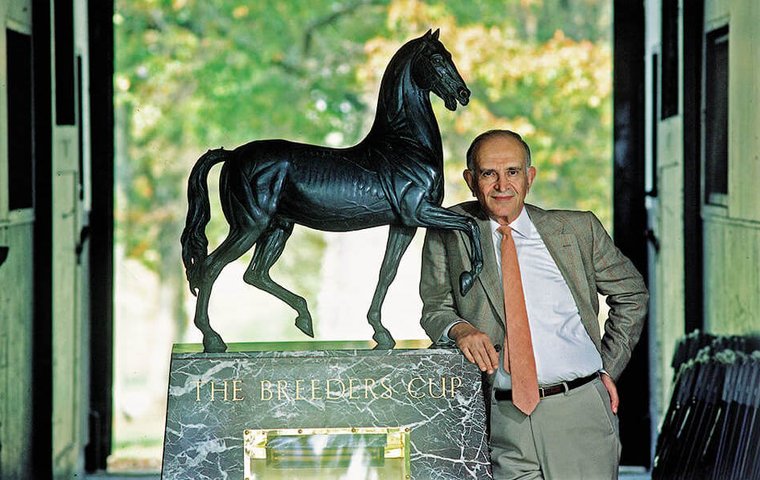
As Santa Anita prepares to host the 40th anniversary Breeders’ Cup, Steve Dennis recalls how visionary owner-breeder John Gaines shook up the racing world four decades ago with his revolutionary concept for a big-money day of championship horse racing
Big things come from little things. Acorns, you will recall. The single step that begins a journey of a thousand miles. The chisel stroke that broke ground on Mount Rushmore. And there is nothing smaller than the germ of an idea, even a big idea like creating the greatest day of racing the world had ever seen, ten million dollars in purses, seven select races, a thrilling new shape and identity for the sport.
An idea can change the world, and this idea changed the face of racing in the US and also on a global ba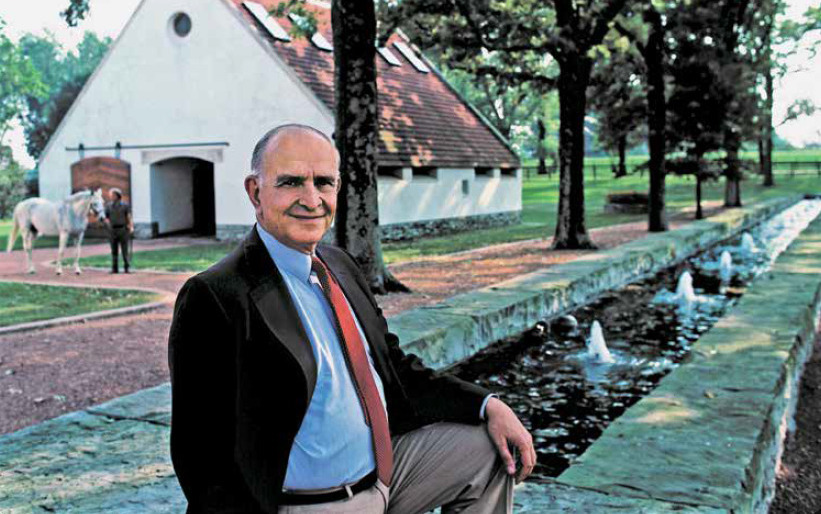 sis with all the explosive finality of two or three well-placed sticks of dynamite. It succeeded – where other new schemes might easily have failed – because it ultimately gave everyone what they wanted, a genie’s lamp of an idea that granted every wish.
sis with all the explosive finality of two or three well-placed sticks of dynamite. It succeeded – where other new schemes might easily have failed – because it ultimately gave everyone what they wanted, a genie’s lamp of an idea that granted every wish.
As the 1970s dissolved into the 1980s, dog-food heir, bloodstock grandee, renaissance man and all-round visionary John Gaines had an idea, the one about creating the greatest day of racing. He gave the idea a name – the Breeders’ Cup. And man, won’t you look at it now.
Dream of a racing fan
“I’m a racing fan,” he once said. “And I just got dreaming about a kind of racing programme that I’d like to see and enjoy.”
The first the world heard about Gaines’s idea was in April 1982, when he shanghaied the ‘They’re Off’ luncheon at Churchill Downs intended to showcase the imminent Kentucky Derby.
The prospects of Air Forbes Won, Gato Del Sol et al didn’t get a look in, however, as Gaines instead delivered a speech outlining his vision of a brave new world, the sort of exercise in fantasy that normally goes no further than the back of an envelope.
The concept is universally known now, and frequently imitated, but back then it was revolutionary. Gaines’s plan was to stage seven championship races on one afternoon, with five worth $1 million, the Turf worth $2m and the Classic, the showpiece of the day and by extension the year, worth $3m. The Kentucky Derby that the luncheon was supposed to extol carried just over $700,000 in purses.
Later, a moment of quiet – possibly a stunned silence – descended upon the occupants of the Gaines family automobile as they rolled homewards down I-64, so his wife Joan started a conversation, as outlined by John Eisenberg in Keeneland magazine.
“That was a pretty good idea, John. How long have you been thinking about it?”
“Oh … three years.”
New ideas are vulnerable
Gaines was described by Joan as “a very interior person – he would just mull things, he had never once mentioned what he brought up that day”.
He was wise to adopt such a lengthy gestation period for his game-changing, sport-changing blueprint, as small, new ideas are vulnerable. They can die at any moment. Indifference will kill an idea stone dead. Lack of resources will strangle it slowly. Poor planning will cripple it. But with vision, will, collaboration …
Here was the key to what would come to be the Breeders’ Cup, billed as the world championships, the greatest show on earth, an event headlined in the Daily Racing Form on its inaugural day as beginning a ‘New Era Today’. In an interview with legendary turfwriter Joe Hirsch in that November 10, 1984, edition, Gaines described the arduous process of negotiation and diplomacy that had brought the Cup to life.
“Ideas don’t climb mountains. People climb mountains,” he said. “The reason the Breeders’ Cup is here today is because of men like Johnny Nerud, Brownell Combs, Nelson Bunker Hunt, John Mabee and others who have worked so hard on its behalf.
“It involved motivating people to work together who have spent their lives competing against each other. There were diverse points of view, but accommodations were made and there were many compromises. People fought hard for what they thought was right.”
Collaborating for the common good
Normally in racing, people only fight hard for what they think is right for them, but Gaines somehow persuaded the titans of the industry to collaborate for the common good, which would of course also be their own good.
His task was made much harder by the absence of an overall governing body for the sport. Gaines was essentially staging a coup d’etat against the old order of things, but he was a man with an innovative mind, industry clout and a track record for achievement.
His motives were questioned, even shrugged aside – “John, I didn’t know that you smoked pot,” said John Galbreath, owner of Darby Dan Farm and transatlantic Derby winners Roberto, Chateaugay and Proud Clarion, in response to his initial overtures.
However, Gaines knew he was on to a winner. Any praise for the idea – and there was plenty – was immediately followed by a tidal wave of caveats. “There is always somebody trying to shoot down a good idea,” said Gaines. The snipers took aim.
Where would the money come from? How would these new races affect the big events already established in the calendar? Where would this extravaganza be held? How would it break through the skin of the racing bubble and reach a wide audience?
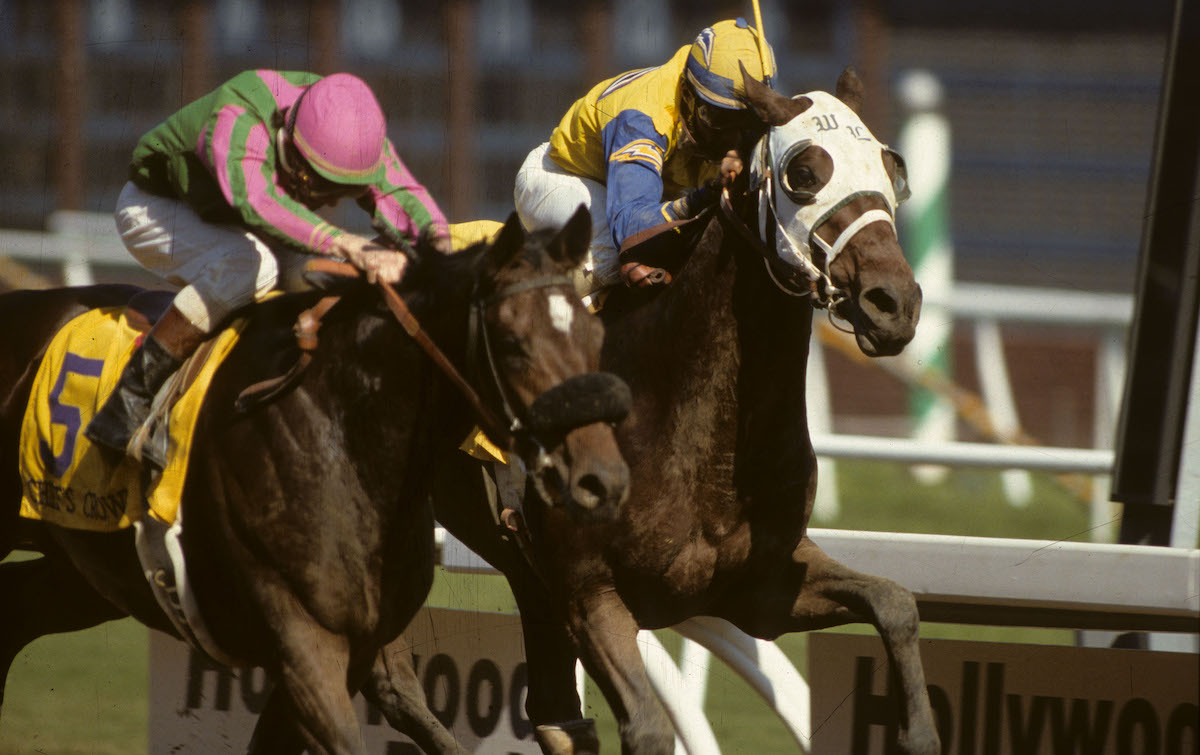 The funding was the fundamental issue, and one that required the full co-operation of the people who gave the Breeders’ Cup its name. Gaines’s plan was to ask stallion owners – including himself, as owner of Gainesway Farm in Kentucky – to contribute one annual covering fee for each of their sires, and breeders to pay a flat fee for every foal registered to the Breeders’ Cup scheme.
The funding was the fundamental issue, and one that required the full co-operation of the people who gave the Breeders’ Cup its name. Gaines’s plan was to ask stallion owners – including himself, as owner of Gainesway Farm in Kentucky – to contribute one annual covering fee for each of their sires, and breeders to pay a flat fee for every foal registered to the Breeders’ Cup scheme.
Self-funded show
The greatest show on earth would thus be largely self-funded, but that was contingent on a buy-in across the board. As Gaines had said, people who had spent their careers in fierce competition were now required to be on the same team. Stallion farms full of star names would have to pay more, lesser establishments would pay less.
There was ample room for conflict, but Gaines steadily drew the disparate strands of the racing business together, strengthening it immeasurably as he went.
“Once we had the major seven or eight stallion-owners in agreement, everything fell into place,” he said. “The ones who took the greatest convincing were among the east-coast contingent.”
They weren’t the only ones. The identity of the fall racing calendar had emerged through steady evolution, with the major races seemingly set in stone from antiquity and for perpetuity.
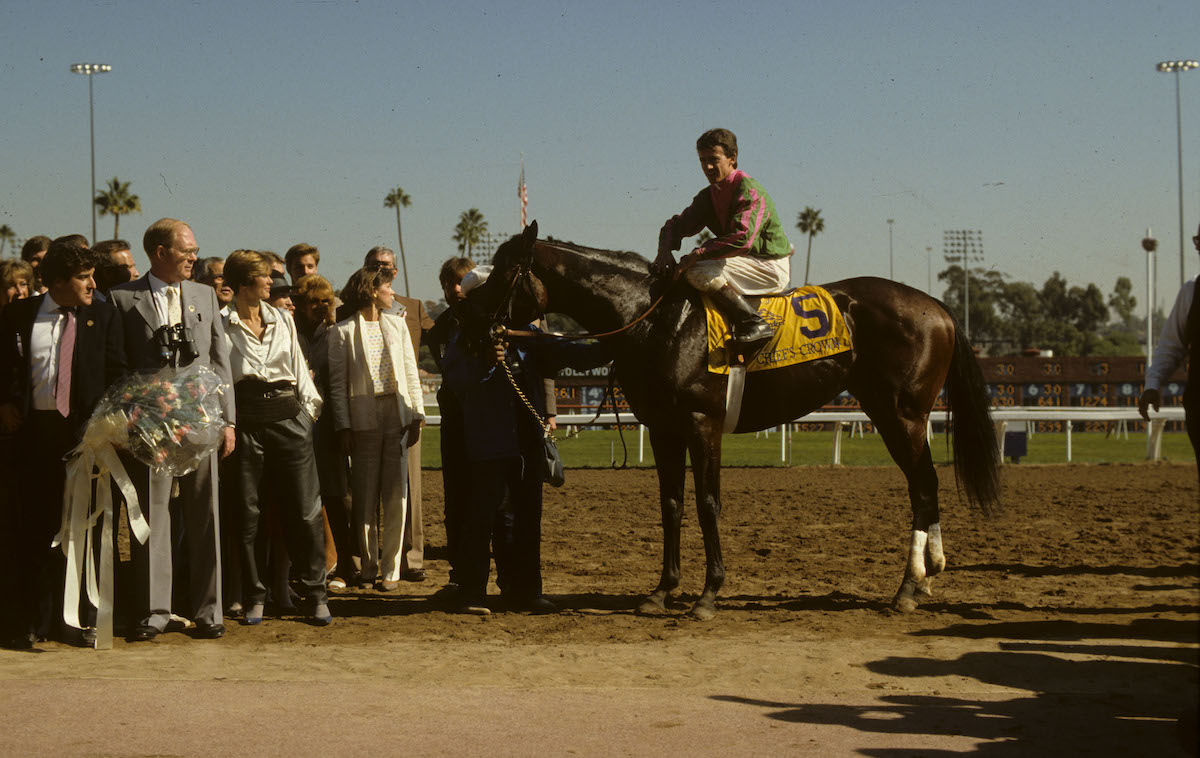 Now here was this Breeders’ Cup arriving on the scene like a vast meteorite, crashing to Earth and changing the climate in an instant, and the dinosaurs needed assurance of the merits of a future that was bypassing them.
Now here was this Breeders’ Cup arriving on the scene like a vast meteorite, crashing to Earth and changing the climate in an instant, and the dinosaurs needed assurance of the merits of a future that was bypassing them.
Hard to get everyone together
“There were races in California in the fall and some really good races in New York, but by the end of October, that was kind of it for big races,” racing writer Jay Privman told the San Diego Union-Tribune. “It was hard to get everybody together.
“One of the beauties of the Breeders’ Cup was that it helped decide the champions,” he went on. “It was ‘run in this thing or you’re probably not going to get a year-end award’. That made it the Super Bowl or the US Open, or whatever you want to call it. There was a defined championship.”
Five of the seven winners at the first Breeders’ Cup were honoured with Eclipse Awards. The meteorite had hit; the paradigm had shifted, not just the tectonic plates.
Thank you for your time, Jockey Club Gold Cup, Champagne Stakes, Norfolk Stakes, but your roles have been reimagined. You are now merely lead-in races to the ‘world championships’.
It wasn’t just the home front, either. The Breeders’ Cup came along just as international competition was becoming an integral element of the racing world, with greater ease of travel providing the opportunity and valuable prizes the incentive.
Irresistible magnet
This too was part of Gaines’s vision – they were increasingly able to come, so why not build it? The Breeders’ Cup would soon become an irresistible magnet, not just the year-end championship event for the US but for the rest of the world.
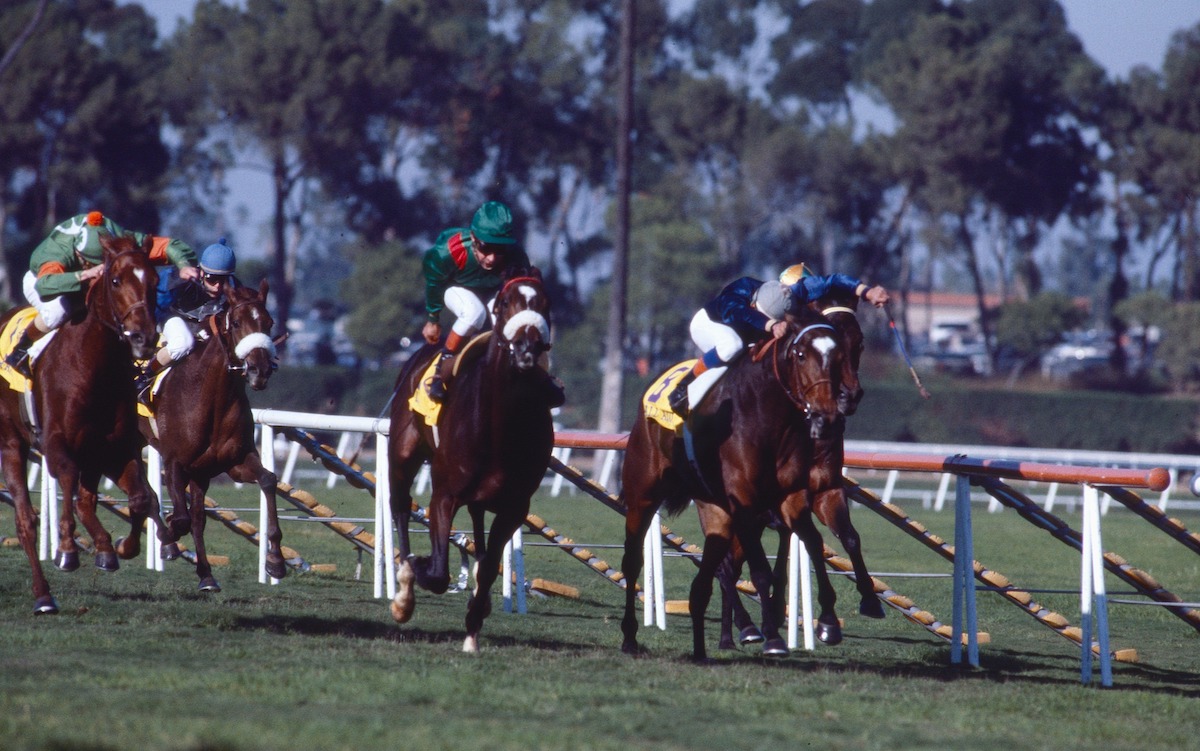 Gaines had other conciliatory tricks up his sleeve. The Breeders’ Cup would be a travelling circus, not bound to one racetrack, a move designed to placate state racing associations and to provoke competition among those wishing to host the event. In its first ten years, the Breeders’ Cup visited six racetracks.
Gaines had other conciliatory tricks up his sleeve. The Breeders’ Cup would be a travelling circus, not bound to one racetrack, a move designed to placate state racing associations and to provoke competition among those wishing to host the event. In its first ten years, the Breeders’ Cup visited six racetracks.
Money from the fund created by stallion owners and breeders, and bolstered by income from simulcast wagering and ticket sales, would also be parcelled out to racetracks to help increase their own purse sizes and create new races that would become Cup lead-ins. The rising tide of Gaines’s imagination would lift every boat.
Everyone eventually came around, everyone bought in, everyone pitched in. Gaines’s final masterstroke was to convince NBC to devote four hours of network broadcasting to covering the event. It was the clincher.
“This type of production is unprecedented and we’re geared up for it with our best people,” executive producer Michael Weisman told the Daily Racing Form. “We are treating this event as we would a World Series or Super Bowl – which it is.”
Vision of fantasy racing
All Gaines needed then was for the first Breeders’ Cup to be a success, no small hope in the uncertain world of racing. It was. It was a tour de force, with his vision of fantasy racing, of the kind of racing programme he’d like to see and enjoy, proving to be exactly the sort of racing programme everyone wanted to see and enjoy, and thereby pioneering the future configuration of top-level racing.
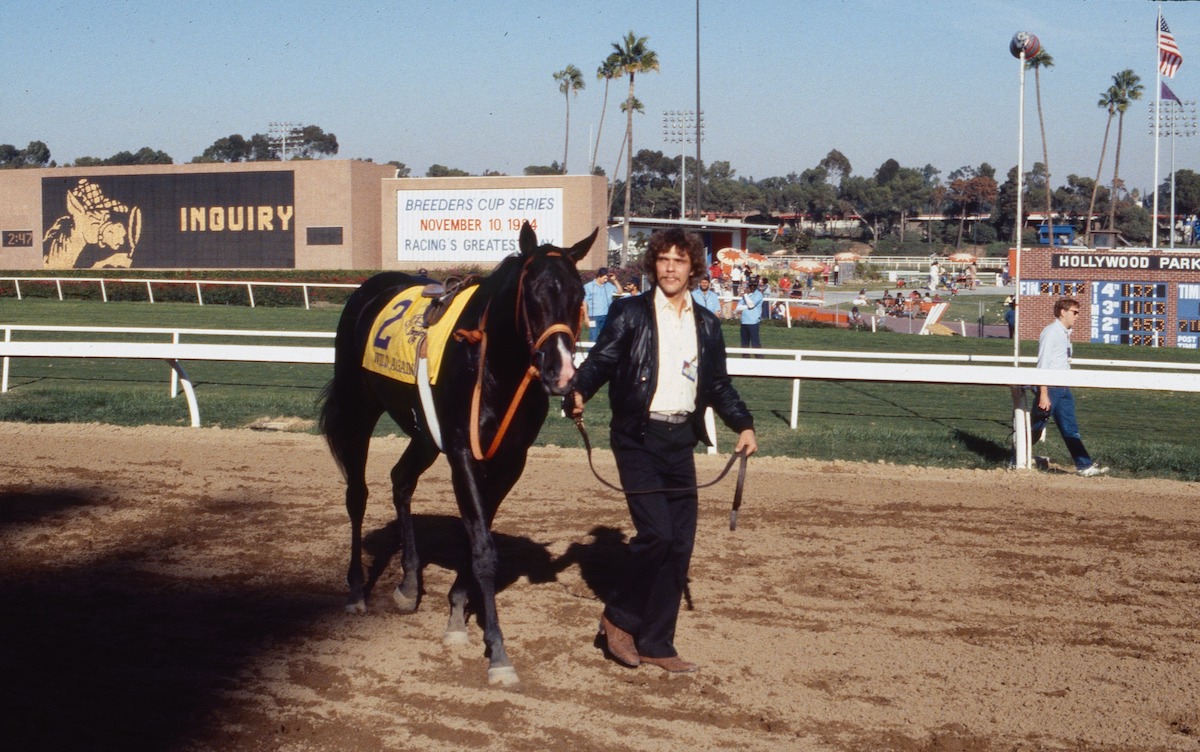 Before the big day, though, Gaines had stepped away from his seat on the board. He has been described as ‘polarising’ and ‘not without an ego’, and his position as chief wrangler for his great idea had led to personal conflicts within the sport. But his idea had changed everything.
Before the big day, though, Gaines had stepped away from his seat on the board. He has been described as ‘polarising’ and ‘not without an ego’, and his position as chief wrangler for his great idea had led to personal conflicts within the sport. But his idea had changed everything.
Gaines died in February 2005, aged 76. “Above all, John was a believer in the power of ideas,” said DG van Clief, founder member of the Breeders’ Cup management team.
Ten years after his death, Gaines was honoured with a plaque at Thoroughbred Park in Lexington, Kentucky. At the ceremony, his son Thomas – who had been at Churchill Downs with his mother and father on that fateful April afternoon in 1982 – delivered his own speech.
“The story of the Breeders’ Cup,” he said, “is a real-life story of what can be accomplished when a few individuals and then an industry unite behind a powerful dream.”
• Visit the Breeders’ Cup website and the Breeders’ Cup Challenge web page
‘The Breeders’ Cup puts equine safety first and foremost’ – Q+A with Drew Fleming
View the latest TRC Global Rankings for horses / jockeys / trainers


